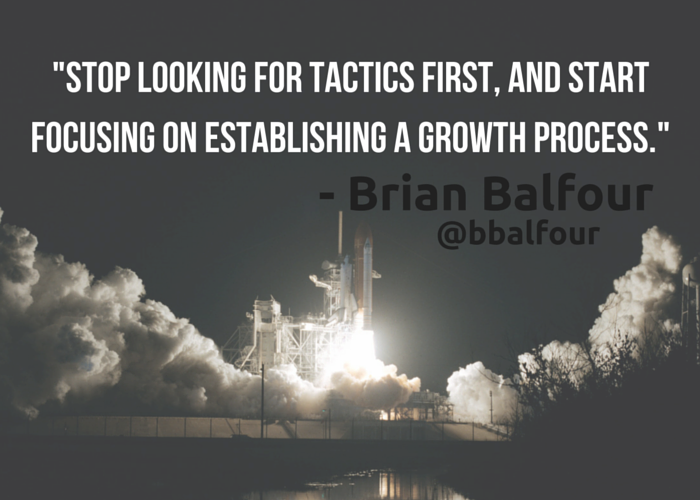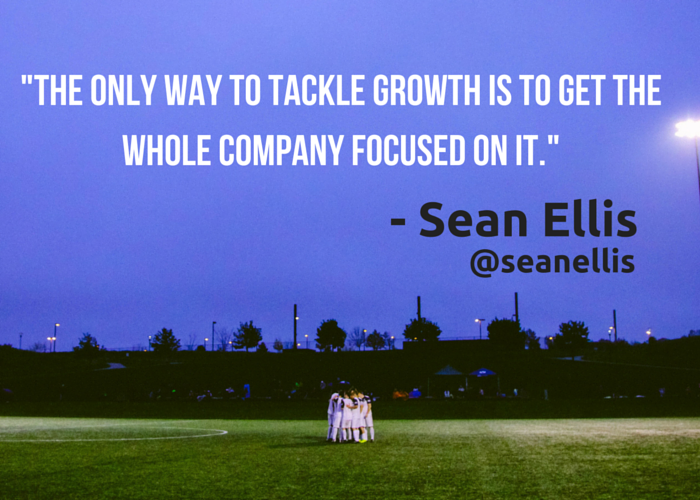
Do any of these sound familiar to you if you’re a growth marketer, product manager or product marketer?
“Let’s test simplifying our signup flow.”
“Maybe we should start playing around with re-targeting.”
“We should test this as subject line.”
“It might be good to be early on Snapchat. We should drive people there.”
“Let’s add a referral option as part of the onboarding flow.”
Click here to learn more about Drift.
When you’re chasing growth — especially as an early stage startup– almost every new idea seems worth testing.
But that’s exactly what makes things hard.
With so many possibilities and ideas flowing every single day, there’s always an endless list (or Trello board) of things that are worth trying and testing. As a result, two things often end up happening:
- You get paralyzed by all of choices and possibilities and do nothing.
- You do a bunch of small things with no rhyme or reason.
Not only do these little “tests” yield nothing significant, but most times you just end up getting distracted and never making any real progress.

This is why a strategic, well thought out approach to growth is the only approach that will work if you’re looking for authentic growth — and why Brian Balfour emphasizes process first and tactics second when it comes to growth.
So you need a plan if you want to grow.
But what does a “plan” entail? Do you need to write a business plan? A full marketing strategy document? Are you going to have to spend hours just creating a plan? None of those things are fun or worth your time — especially at a startup.
Enter Sean Ellis.
Sean created GrowthHackers.com after running marketing at LogMeIn, and leading the first growth team at Dropbox — and over the years, Sean has narrowed down a simple framework that you can use to build a company-wide growth culture.
This framework is simple to follow, easy to implement and produces result immediately (even if you’re not focused on growth marketing).
Sean recently shared his framework at SaaStr Annual 2016 (here’s a link to his presentation if you want the full slides). Here’s how it works.
Creating A Company-Wide Growth Plan
Get Growth Ideas From Everyone
In order to grow, you will need ideas from everyone one your team. It doesn’t matter what their day to day job is. Often times, the best ideas will come from people who are removed from the key area that you’re focused on. Growth needs to become everyone’s job.

Broad participation also means getting external people involved too. For example, you might not know much about Pinterest as a marketing channel, but it might be something that is worth testing given your industry. Bring in someone — even just for a lunch and learn — that knows Pinterest well so you can learn from them and figure out what to test.
Regardless of where you get ideas from, the goal here is to generate as many growth ideas as possible.
Rank Growth Ideas By Their ICE Score
After cleaning up a list of all of the ideas your team has come up with, take each idea and formalize them into an experiment document. This includes things like your hypothesis (why you think this will work) and the data you will need (how you will know this worked).
Then give every idea an “ICE” score from 1 to 10. ICE stands for impact, confidence and ease:
- Impact. If this idea works, will it have a big impact?
- Confidence. How confident are you that this idea will work?
- Ease. Is this idea something that will be easy to test, or will it take weeks of product development to figure out?
Rank each of your growth ideas according to this ICE scale. This will help you prioritize your big list so you can narrow it down and find a few tests that are worth running right now.
The key is to find ideas that score well across ICE. Look for tests that are easy to run and will have a high impact.
Create A Weekly Cadence For Testing New Ideas
Once you’ve created a big backlog of ranked ideas, it’s time to start testing. But instead of planning out big tests that will take weeks or months, Sean suggests a weekly cadence so you can get to yes or no quickly. Often times, figuring out what doesn’t work can be the biggest win.
Sean recommends kicking off every week with a growth meeting and appointing one person to run the meeting. Ideally this is your growth leader, but if you don’t have a growth team, you can start off with more of an ad hoc team. The key is to just have someone in charge of coordinating all of the moving pieces, since tests will often span across marketing, design and engineering.
Here’s Sean’s sample agenda for this meeting:
- 15 minutes: Growth metrics, issues and opportunities
- 10 minutes: Review the result of the previous week’s tests
- 15 minutes: Share key lessons learned from those tests
- 15 minutes: Identify new tests for this week
- 5 minutes: Review backlog of ideas
Two key takeaways from the growth meeting:
- The first ten minutes of every meeting should be focused on analyzing the results of last week and figuring out why tests were successful (or not). It’s all about understanding what happened and why — then you can inform your future tests.
- To keep everyone involved and the backlog full, Sean suggests that everyone pitch a new idea at the meeting each week.
Be Transparent With Your Learnings
Regardless of which new ideas come out of the weekly meeting, the goal does not change. The goal should be to get learnings at a high tempo. The more testing you do, the more learnings that you’ll have.
But if you don’t share those learnings with the rest of your team, you’re going to have a hard time getting key people onboard to submit new ideas and help with initiatives around growth.
Sean suggests being super transparent with your learnings — even the tests that failed.
Stay Focused On Value
When you’re working on growth, it can be super easy to get caught up in the data, but be careful about getting too far in the weeds.
If you stay laser-focused on delivering value to your customers, growth will follow.



